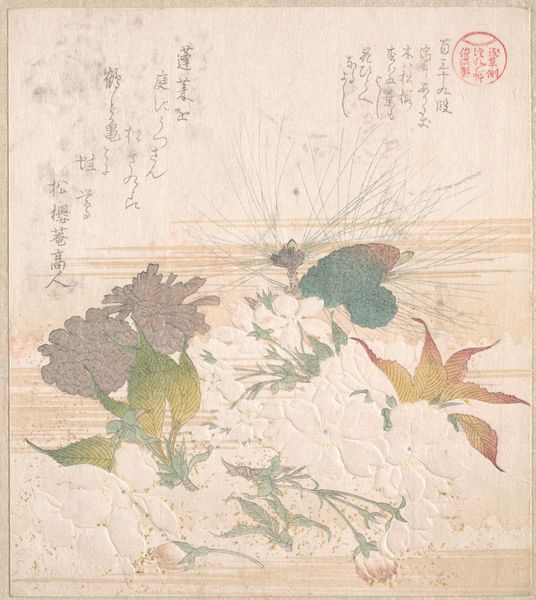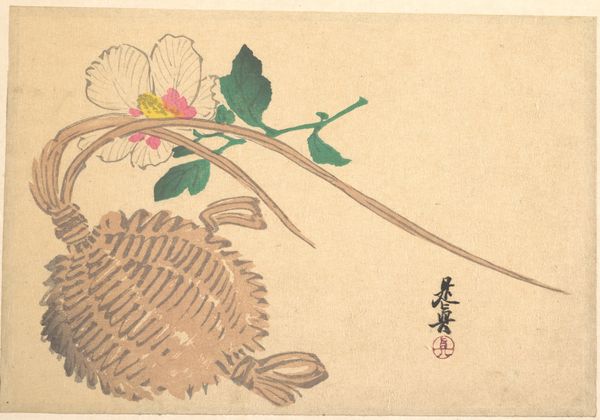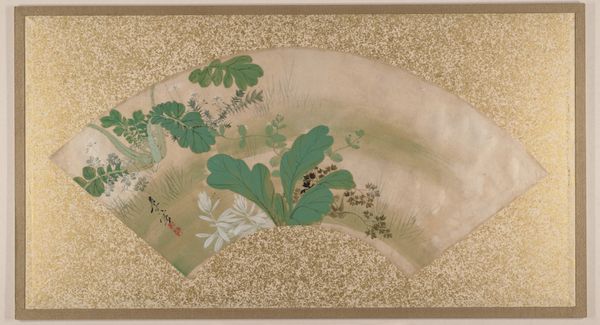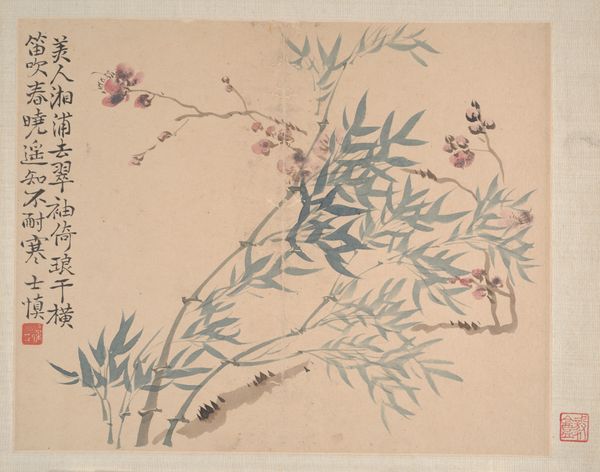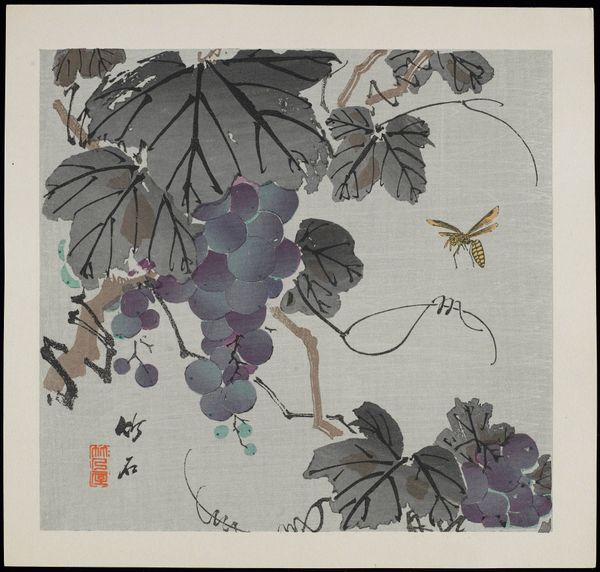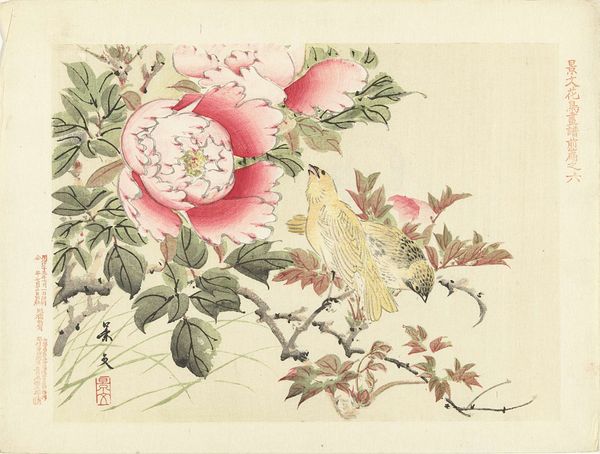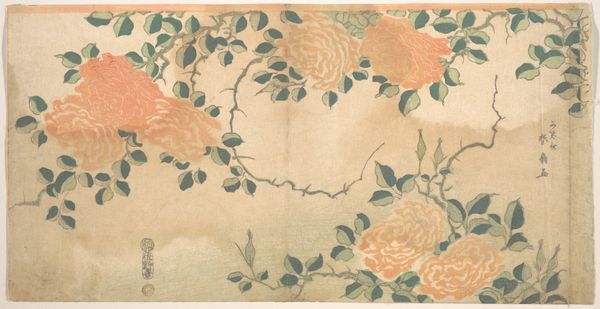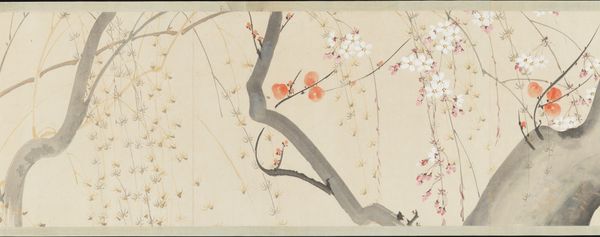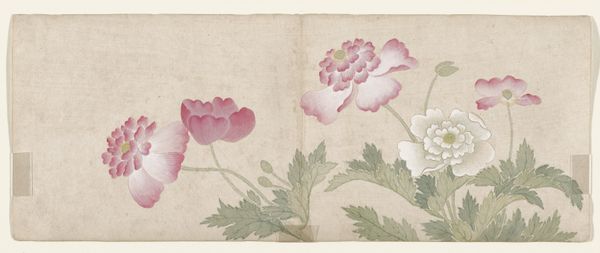
Selected Insects from Close at Hand (Chūka senzen 肘下選蠕) Possibly 1820 - 1827
0:00
0:00
drawing, print, watercolor, ink
#
drawing
# print
#
asian-art
#
landscape
#
ukiyo-e
#
figuration
#
watercolor
#
ink
#
coloured pencil
Dimensions: 8 1/4 × 5 9/16 × 1/2 in. (20.96 × 14.13 × 1.27 cm)
Copyright: Public Domain
Mori Shunkei made this woodblock print titled "Selected Insects from Close at Hand" in early 19th century Japan. It depicts insects amidst lotus plants, showcasing a fascination with the natural world. During the Edo period, Japan experienced relative peace and economic growth, fostering a flourishing of arts and sciences. Illustrated books like this one became popular, reflecting a growing interest in natural history and a desire to classify and understand the world. The meticulous detail in depicting the insects also points to the influence of Confucianism, which valued careful observation and empirical knowledge. But these images also need to be understood within the social context. In a society rigidly divided by class, the study of natural history was largely confined to the elite. Illustrated books like this one served to reinforce the social hierarchy by creating a sense of shared knowledge and cultural capital among the ruling class. To fully appreciate the social context of this artwork, we might consult historical texts on Japanese natural history, social commentaries from the Edo period, and museum collections that showcase the material culture of the time.
Comments
minneapolisinstituteofart almost 2 years ago
⋮
In this finely printed book, images of insects and plants alternate with pages of Chinese poetry. In the nineteenth century1800s, Japanese publishers began to print heavily illustrated books with little or no text, usually with no narrative thread. Scholars posit that poetry books such as this one served as the intermediary step between books with just only text and those with just only images: books of poetry served as an in-between as publishers noticed that images could give rise to new poetry once the texts were separated from the illustrations. Color woodblock-printed books were more expensive and labor-intensive than those printed with ink. Each color required necessitated a separate woodblock, and a single colored image required a printer to print on the same sheet multiple times. This publication also presents the illustrations as if they are prints by omitting the typical framing lines seen in books, allowing the picture to extend from one page to another.
Join the conversation
Join millions of artists and users on Artera today and experience the ultimate creative platform.
